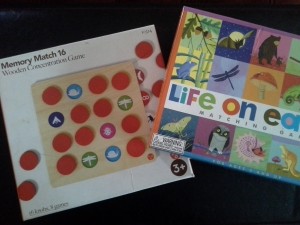A key way to ensure your child remains interested in learning a world language is to make it fun, informal and light. In addition to her class time once a week, it is important to give her an opportunity to show off her new language skills at home with her siblings and/or parents while having fun at the same time. One very quick and easy way to accomplish this is to take one of the games you already have at home and give it a foreign language twist. Younger children may find it “funny”; older children may find it “challenging”. Both scenarios make for an enjoyable time for all. It is an interactive and natural way for your child to review colors, numbers, age-appropriate vocabulary, animals, and shapes. It also helps them start thinking in the target language.
For parents who are not fluent in the target language, no worries! Children love to be on the teaching end and will welcome the opportunity to teach you what they know.
Some classic games you can play at home with children who are learning a foreign language are listed below. For most of us, there is no need to go out and buy them; they are probably collecting dust in the play room. For those not familiar with these games or living overseas, please go to the Resources tab on my blog for a description and tips on how to use them to complement your child’s language learning. These games are usually available outside of the U.S. – sometimes under different names.
- Candy Land
- Chutes and Ladders
- Colorama
- Parcheesi
- Uno
- memory games
- matching games
For additional or more advanced games, I encourage you to “follow” my blog to continue receiving updates which will address more advanced learning tools for older children.
Have fun, in any language!!!




